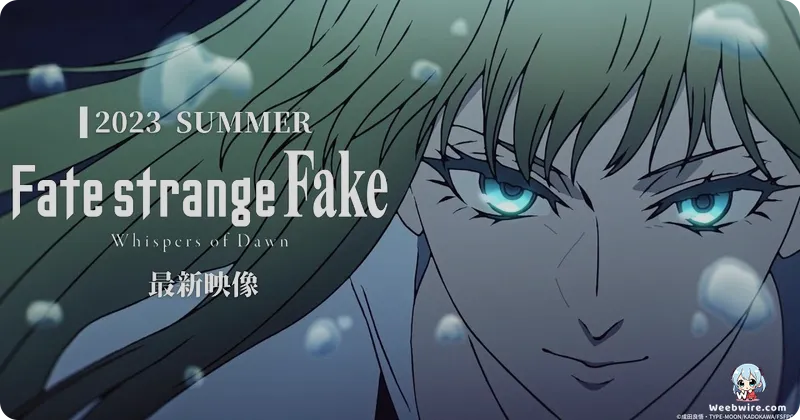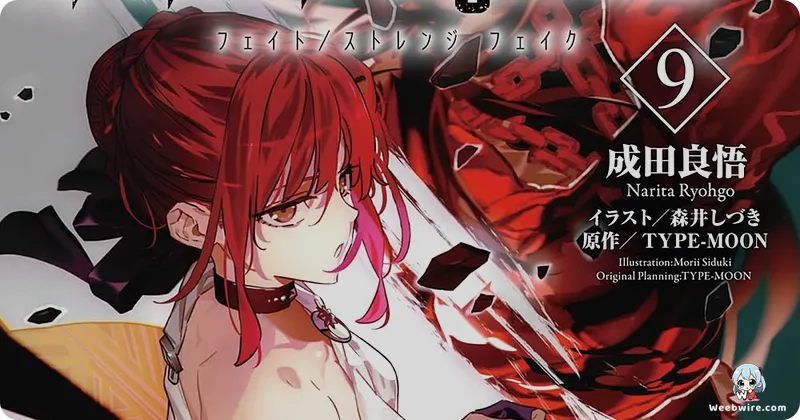From April Fools' Prank to Epic Saga: The Unlikely Genesis of Fate/strange Fake

The Genesis of a Phenomenon
In a remarkable testament to creative serendipity, the globally acclaimed Fate/strange Fake series, known for its intricate narratives and subversive take on the Holy Grail War, originated from an unexpected source: an elaborate April Fools' Day prank. Back in 2008, the celebrated author Ryohgo Narita, revered for his complex, interwoven storytelling in hits like Baccano! and Durarara!!, crafted a short story titled Fate/strange Fake for a Type-Moon April Fools' event. This initial concept was never intended to blossom into a full-fledged light novel series, let alone inspire a highly anticipated anime special. Yet, the sheer ingenuity and immense potential embedded within that fleeting jest captivated both fans and editors alike, leading to its eventual commissioning for serialization. What began as a whimsical prank thus transformed into a pivotal cornerstone of the expansive Fate universe, perfectly encapsulating the series' spirit of unexpected twists and thrilling subversions.
Narita's Masterful Narrative Weaving
Narita's signature narrative style is undeniably a cornerstone of Fate/strange Fake's appeal. His approach is akin to weaving a magnificent, multi-threaded tapestry, where seemingly disparate characters and complex plotlines converge in a dazzling, often explosive climax. In Fate/strange Fake, this hallmark is amplified, presenting a Holy Grail War far more chaotic and sprawling than its predecessors. Unlike the more focused conflicts of Fuyuki, the Snowfield Holy Grail War is a maelstrom of competing intentions, clandestine agendas, and an unprecedented number of participants. Narita masterfully juggles this vast ensemble, ensuring that even minor characters contribute significantly to the grander scheme. This makes the narrative incredibly dense and profoundly rewarding for readers who delight in piecing together complex puzzles, demanding a keen eye to uncover the subtle foreshadowing and interconnected events that define Narita's genius.
The Unconventional Snowfield Holy Grail War
The very premise of the Snowfield Holy Grail War offers a wealth of intriguing distinctions. It's not merely a conventional Holy Grail War but a "False" one, illicitly orchestrated by the United States to replicate the Fuyuki ritual. This inherent flaw introduces a layer of instability and unpredictability, as the system itself is compromised. Consequently, not only can "True" Servants be summoned, but "False" Servants, those with distorted legends or summoned under unusual circumstances, also emerge, blurring the lines between myth and reality. This crucial distinction allows for unique interpretations of historical and mythical figures, offering fresh perspectives on familiar legends. For instance, the summoning of a Rider who is not the true legendary figure but an imposter, or a Caster whose true identity is far more ancient and terrifying than initially perceived, adds layers of mystery and dramatic irony. The sheer audacity of a Holy Grail War initiated by a clandestine US organization, rather than the traditional Mage's Association or Church, immediately sets it apart, welcoming a diverse array of non-magus participants, from government agents to criminal masterminds, each driven by their own twisted motivations.
A Cast of Legends and Eccentrics
Delving into the Servant roster reveals even more fascinating dynamics. The relationship between Gilgamesh, the King of Heroes, and Enkidu, his only equal and cherished friend, forms a central pillar of the series. While Gilgamesh has appeared in other Fate iterations, Strange Fake uniquely positions him in a war where his "True" Lancer, Enkidu, is also present. Their reunion, albeit under the adversarial circumstances of a Holy Grail War, is imbued with a profound sense of destiny and a complex interplay of respect, rivalry, and deep affection, a rare treat for long-time Fate fans, offering a new glimpse into their legendary bond. Another standout is Richard the Lionheart, summoned as a Saber; his portrayal is not merely that of a valiant king but a charismatic, somewhat reckless adventurer, eager for battle and a good challenge. His legend is intrinsically tied to the Crusades, and Strange Fake explores the complexities of his historical persona, often with a mischievous wink.

Then there's the truly bizarre and endearing duo: Flat Escardos and his Berserker. Flat, a prodigy of the Mage's Association, possesses eccentricities bordering on genius-level obliviousness. His relationship with his Berserker is arguably one of the most unconventional Master-Servant pairings in the entire Fate franchise. Instead of a beast of uncontrollable rage, Flat's Berserker exhibits an almost childlike curiosity and an uncanny adaptability, often mirroring Flat's own bizarre thought processes. Their interactions provide much-needed comedic relief amidst the grim realities of the war, while also highlighting the profound bonds that can form under extraordinary circumstances. The very nature of Flat's magical talent, often described as having an "empty mind" that allows him to grasp concepts without traditional understanding, makes him a unique and unpredictable force, often stumbling into brilliant solutions purely by accident.
Bringing the World to Life: Shizuki Morii's Art
The visual representation of Fate/strange Fake also holds a special place. Shizuki Morii’s distinctive illustrations for the light novels are integral to the series’ identity. Morii’s art style, characterized by sharp lines, dynamic compositions, and an ability to convey both intense action and subtle character emotions, perfectly complements Narita’s intricate storytelling. The character designs are instantly recognizable and have become iconic within the Fate fandom, capturing the essence of each Servant and Master with striking detail. The vibrant colors and expressive faces bring the chaotic world of Snowfield to life, making the often-complex narrative more accessible and visually engaging for readers. The consistency and quality of Morii’s work have been a significant factor in the light novel’s widespread appeal, establishing a strong visual foundation for the series long before any animated adaptation.
A Legacy of Innovation
Ultimately, Fate/strange Fake stands as a testament to the boundless creativity within the Fate universe. It’s a series born from a joke, meticulously nurtured by a master storyteller, and brought to life by compelling visuals. Its "False" Holy Grail War, diverse cast, and Narita’s signature narrative acrobatics offer a fresh, exhilarating, and often hilariously chaotic experience. For those who delve into its depths, it provides not just another chapter in the Fate saga, but a unique, self-contained epic brimming with surprising facts, unexpected alliances, and a narrative density that rewards repeated engagement. It’s a true celebration of what makes the Fate franchise so enduring: its capacity to reinvent itself while staying true to its core themes of heroism, sacrifice, and the eternal clash of legends.
Credits
Fate/strange Fake
Author
Ryohgo Narita
Cover Art
Shizuki Morii
Studio
Aniplex
Publisher
Dengeki Bunko
Producers





